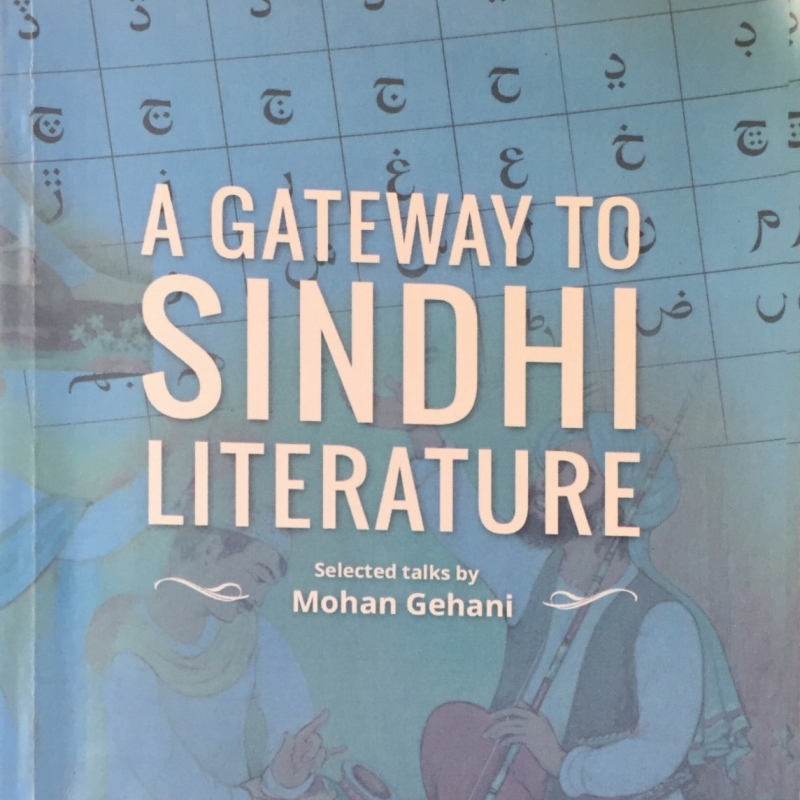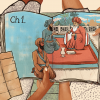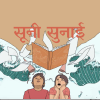A story in any language is said to be as old as human speech itself. In India, we have a vast storehouse of stories in the Puranas, Jatakas, Panchatantra and so on, all of which are stories that aim to impart certain educational or moral values. The genre of modern short stories, however, is quite recent. This genre has a specific format and craft, and makes specific demands of the writer. In this form, every stroke has to be convergent to create an effect through its narration; therefore, by its very nature, it has to be compact and chiselled in its expression. The exemplary pioneers of this form are considered to be O. Henry, Guy de Maupassant and Anton Chekhov, to name a few.
This specific form came into existence in Sindhi when Late Lalchand Amardinomal penned his piece 'Hura Makhi a Ja' (Hura of Makhi) in 1914. This is almost the same year in which the first Hindi short story, 'Usne Kaha Tha' was written by Chandradhar Sharma ‘Guleri’ (1915). Thereafter, along with original stories being written in the Sindhi language, Sindhi short stories continued to be nurtured through translations from various Indian and European languages. Short stories by O. Henry, Guy de Maupassant and Anton Chekhov remained early models to draw upon.
Initially, however, literature was conceived as a vehicle of social change and the Sindhi short story remained highly influenced by the social reform movement and freedom movement. These twin trends continued to run through the literature concurrently. For instance, Jethmal Parsram wrote short stories and his collection was entitled Chamraposh Joon Aakhayoon (Stories by one in Disguise) and Lalchand Amardinomal wrote the play, Umer Marvi.
The significant short stories that have endured the test of time are quite different in nature. Amarlal Hingorani wrote his short story 'Ado Abdul Rehman' (Brother Abdul Rehman) in 1930 and it was reprinted again in 1940. Assanand Mamtora wrote 'Kiki' (a pet name for a girl child) and 'Gawarin' (Rustic Woman). Both stories, 'Ado Adul Rehman' and 'Gawarin', were shortlisted by UNESCO scholars. Finally, the English version of 'Ado Abdul Rehman' found a place in a journal published by UNESCO in 1954.This story also found a place in a selection of short stories published by Sahitya Akademi in 1959, while Assanand Mamtora’s story 'Gawarin' was published in a subsequent issue of Sahitya Akademi’s journal. 'Ado Abdul Rehman' is a story of a divinely inspired ‘Malang’ (Sufi mystic), such as were found in rural Sind. They enjoyed a sort of impunity and could criticise the high and mighty while exposing their misdeeds. This character has a queer habit of first talking aloud to himself before repeating the reply to any question. The writer has effectively employed this technique to criticise this section of powerful people, who enjoy social respectability because of their position. In fact, characters such as the ‘malang’ served as safety valves in a rural society. 'Kiki' has shades of a Freudian psychological approach, which was a new trend in Sindhi literature of the time.
In the early 1940s, some students of the freedom movement were attracted towards Marxist philosophy; it was during this period that the trend of progressive literature emerged. This young band of enthusiastic Marxist-progressive writers brought out many short stories in various publications. They also published two collections of short stories, Registani Phoola (Desert Flowers) and Safed Wahishi (A White Brute).
The Trauma of Partition
In 1947, the Partition of India came as a thunderbolt. It was an unexpected occurrence. Sindhi Hindus had all along been made to believe that talk of Pakistan was mere hot air, nothing more than a bargaining chip. At first, the blow stunned them. When they regained the capacity to comprehend what had happened, they found themselves scattered like leaves in a fierce storm, holed up in camps left vacant by the British army—ten families to a hall, about 100 square feet for the entire family, divided by a thin jute cloth and a common water tap and toilets. Shorn of privacy and human dignity, they found themselves standing in long queues for a handful of food, given to them as charity. All that was familiar was gone and suddenly all contexts of society, community, kith and kin and even geography had changed. It was a long struggle to absorb the new reality of life, and the trauma of Partition continued for years.
But nothing in this world is more potent than the life force, which asserts itself against all odds. An entire living society had been uprooted; a band of people who constituted the middle-class, shopkeepers, business class and a sprinkling of landed gentry. Workers, peasants and artisans were all left behind in Sind (Pakistan) as they were Muslims. The uprooted community had students, teachers and government servants in its midst. Those in service sought employment. Sindhi schools were started in existing school buildings through a newly introduced shift system, so that the available infrastructure could be used to its maximum capacity before the regular school day began. Teachers began to teach and students began to study. Old textbooks were reprinted. Journalists started newspapers and writers resumed their writing.
It has already been mentioned that just before Partition, some students had gravitated to socialist thought and a progressive literary movement had already made inroads. They had a dream of revolution, where all injustice and inequities, all ills of society would vanish. After coming to India, they felt that the promised revolution was ‘around the corner’. This faith held out a much-needed ray of hope in the midst of the gloom caused by the struggle for sheer survival. Thus, this group of committed writers started writing about the revolution that was soon to come. They wrote of their strife, their travails and ended with a message of hope. They went to the masses in the camps to read out their poems and short stories and the audience heard them appreciatively. Writer such as Jethanand ‘Taab’ wrote stories in keeping with the Marxist understanding that the middle class would eventually get absorbed into the working class and form the vanguard of the revolution.
The Partition impacted the social structure of these families as well, as in order to survive honourably, all members of the family, including women and children, had to start working. Women would make eatables like papads, khichas, kachris and pickles, and would go into affluent areas of the city to sell their wares. In this situation, women lost some of their inhibitions and experienced a breath of fresh air and freedom. Thus, age-old gender roles that had thus far confined women to their homes started to crumble. This fact was reflected in the literary field as well. Popati Hiranandani, Sundri Uttamchandani, Tara Mirchandani and Kala Prakash emerged as strong female voices in literature—a domain that was considered an exclusive preserve of men before Partition with the exception of a lone woman writer, Guli Sadarangani, who had contributed one novel, Itihad (Unity), during the freedom movement.
Kala and Moti Prakash (Photo courtesy Asha Chand)
Immediately after the displacement, the men would earn a living by spreading bedsheets on the footpath with everyday necessities, selling them at the lowest profits. After school hours, children would sell sundry items in local trains. It was against this background that Tara Mirchandani wrote her story, 'Gopu'. A young boy trying to sell candy loses his life while moving from one compartment of the local train to another. There was also Sundri Uttamchandani’s short story 'Bhoori' (Doll), in which an old admirer, now married, finds the woman he loved selling papads. The confident and dignified way with which she still carries herself underscores the dignity of labour in contrast to the timid middle-class wife.
During those times, parents who had migrated to India would eagerly await the day their teenaged children would pass their matriculation exams and be eligible for a job. Thus, boys and girls from many families entered the Railways, banks, insurance companies and any job they could get as lower division clerks. It was against this background that Uttam’s 'Raja' was written, about a peon working in an office. Raja, who is only a shade above a lower division clerk, is fearless and proud, in contrast to many clerks who are meek and fearful. Ishwar Chandra’s world of short stories consists of these lower division clerks. His short story 'Na Maran jo Dukh' (Regret for not Dying) is the story of a clerk whose mother is on her deathbed. He takes a loan from his office in anticipation of meeting the expenses related to her death. As custom demands, he gathers his sisters and brothers-in-law when the mother is critically ill. However, his mother recovers, and meanwhile, he has spent all his borrowed money. Consequently, he regrets that his mother is not dead as he now dreads the financial difficulty he will face when she actually dies! Kala Prakash’s stories also have such households as their background, speaking of the tensions that result in the family through want and deprivation.
The world of many of the writers of this period is of the lower middle-class, where existence becomes difficult when all the resources are drained away by the end of the month. In fact, Mohan Kalpana’s stories are mostly about the unemployed but talented youth and their love affairs with employed girls who are in better financial and social situations. Thus, this trend of literature oriented towards socialist values dominated for nearly two decades.
Nostalgic Literature
At the same time the trend of nostalgic literature about Sind emerged in Sindhi literature. At the time of Partition, when Sindhis were leaving their homes, they thought that it was a temporary move—that they would return after the ‘hotwinds’ blew over. They did not realise that they would never again see their homeland, its familiar sights, or the Muslim friends with whom they had grown up and shared many memories.
The communal divide was a recent phenomenon, fanned by politicians. For centuries, members of both communities had lived peacefully side by side. The Sufi ethos of Sind and the teachings of Sikh Gurus were conducive to such a harmonious lifestyle. In Sind, comparatively few incidents of rioting and deaths occurred. The exodus of Hindus was a result of the mass hysteria unleashed by those troubled times. In fact, when communal riots occurred in Sind, instigated by the refugees who had migrated from India, many families were saved by their Muslim neighbours. Several people had left the keys to their home and property with their neighbours for safekeeping.
When the reality of Partition sank into the community’s consciousness and they realised they would never again see their friends, a sense of longing and loss prevailed. This found expression in literature as well. Narayan Bharti wrote the unforgettable stories 'The Claim' and 'Dastawez' (The Document). Anand Golani wrote 'Gamro' (Village). Loknath Jetley brought out a collection of nostalgic stories titled Visaryanna Visran (Would Not Forget However I May Want To). Kirat Babani wrote 'Toon Pucheenthocho Udhas Ahiyana' ('You ask me why I am Sad). Popati Hiranandani wrote 'Muhinji Nani' (My Maternal Grandmother) and Kala Prakash wrote 'Khanwahan' (the name of a village in Sind). Many such stories were written during this time, expressing a sense of loss.
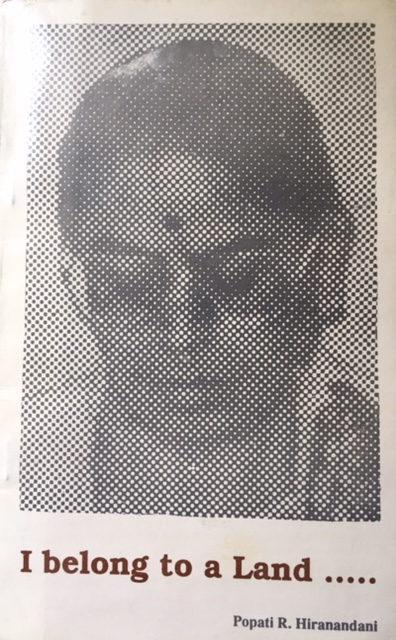
In his book, Sindhi Sahitya-jo Jaizo ('survey of Sindhi literature'), a study of post-partition Sindhi literature published in 1980, Prof. M.U. Malkani reproduced an article he wrote in 1954 where he listed 35 active and important writers in and around Bombay (now Mumbai), who wrote numerous stories, running into hundreds, in those times. He mentions that eight of these even published short story collections. During that period, the short story remained a very popular and vigorous genre. Even Sugun Ahuja and Krishin Rahi, who went on to become leading poets during that period, wrote short stories and brought out collections. Another welcome addition to this trend was Kaladhar Mutwa. Residing in the Banni area of Kutch—where the Sindhi population has settled through centuries, livingly mostly a pastoral life—he has contributed some stories to Sindhi literature which are rooted in the soil. In this way, his rural short stories came as a breath of fresh air in the parched land of nostalgia.
Preserving the Language
It was during this period that the Indian Constitution was framed and India was declared a ‘Republic’. The Sindhi language did not figure in the Constitution. This unjust omission greatly agitated the community as Sindhi was denied all privileges that were available to other languages. The Sindhi language faced gross discrimination at every level and this was most deeply felt in the field of education. Thus, there was an upsurge led by educationists, writers, artists, intellectuals and community leaders, and a spontaneous movement for the inclusion of the Sindhi language in the Indian Constitution. Sindhi writers and artists were at the forefront of this movement of ‘Sindhyat’, a word that came to define the preservation and promotion of Sindhi culture and the Sindhi community as a distinct cultural identity. The Sindhi language found its rightful place in the Indian Constitution only in 1967.
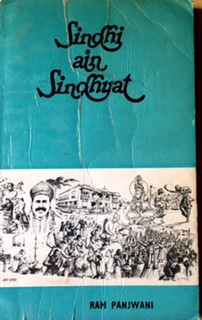
During this struggle, many new writers and journals were introduced at various places. In Delhi, Lachman ‘Komal’, Harikant, Motilal Jotwani, Prem Abichandani, Anand Khemani, Shyam Bhagia and many others supported by veterans like Narayan Shyam, Harumal Sadarangani, Prabhu Wafa, Tirth Basant and many others effectively wielded the pen and contributed to various genres of Sindhi literature, including the short story. In Jaipur, it was Sunder Agnani, Vasdev Sindhu Bharti and Lachman Bhambani and their many colleagues. In Ajmer it was Goverdhan Bharti, Ishwar Chander, Hari Himthani and many others who were at the forefront of the movement. In Ahmedabad, it was Lilaram Ruchandani, Arjan Hasid, Vasdev Mohi and Kirat Meharchandani who became its torch-bearers.
The loss of heritage, especially in the context of the Sindhi language, has been effectively portrayed in a story, 'Ghanti' (A Bell) by Harish Vaswani. In this story, he depicts an old man who has been given a bell to sound in the event of an emergency. Once a visitor arrives, and speaks to him in Sindhi. As the guest is about to leave, he rings the emergency bell and tells him that maybe this would be the last time he was speaking in his mother tongue. Here the symbolism of the warning bell for the community is outstanding. This sense of loss and quest for one’s roots as well as the desire to preserve the distinct Sindhi cultural and literary identity flows like a perennial river, cutting across all academic divides and literary trends like modernism, post-modernism, new historicism and so on. These are trends along which Sindhi literature has also moved.
For a progressive writer, it was incumbent to have an explicit message in the writing. Those who were sucked into a progressive literary movement due to the romance of the idea of revolution were soon disillusioned. The fact was that even the promised ‘revolution waiting around the corner’ had played truant. These writers then turned to the eternal theme of love—a man-woman relationship. Ishwar Anchal, a leading poet of his times, wrote a story 'Chuao' (A Touch) about the thrill of romantic touch. Some other writers followed him and an important trio of writers, Mohan Kalpana, Guno Samtani and Lal Pushp emerged as ‘romantic' writers in Sindhi literature (they were called romantic writers because they wrote about love; they were not in any way connected to the Romantic phase in European literature).
Mohan Kalpana’s characters engaged in verbal witticisms, Guno Samtani’s short stories were studded with Hindi words to give it a classical veneer and Lal Pushp’s stories were loaded with philosophical insights. Lal Pushp traversed through all other subsequent literary trends, modern as well post-modern. All three have left an undeniable mark on the Sindhi short story and have contributed to its corpus.
All along, the community which started in desperation, mustering all the strength it could, to eke out a living, was now on the road with tbe one-point agenda of making money. In this pursuit, they remained oblivious to the loss of their language, literature, traditional values and even forgot to think about their roots. For the intelligentsia of the community, this was indeed an alarming situation and many writers wanted to draw attention to this drift towards the embracing of 'new rich' values. In this context, the stories of Lakhmi Khilani and Krishin Khatwani are significant.
Lakhmi Khilani (right) at the Indian Institute of Sindhology
(Photo by Menka Shivdasani)
After Independence, India saw many changes due to economic and social developments. By the 1960s, wide-ranging reforms had led to the emergence of a new middle class. Unlike the middle class of the earlier era, which had a Western-oriented liberal mindset and value system, this class had moorings in the villages and a conservative mindset. It was also a time when, at the global level, the Cold War was at its peak and there was a constant endeavour to win over the minds of the emerging classes and relatively privileged sections. This class also suffered from a strong sense of alienation.
The 'New Literature'
In such a situation, in order to counter the Progressive Writers movement, a range of post-War literature—speaking about the loss of values, absurdity, existence without any meaning, and used symbols such as the myth of Sisyphus and even Freudian psychoanalysis—was cited as a model. All this was labelled under one umbrella term, ‘New Literature’. As most of the young Sindhi writers were ardent readers of Hindi literature, they were attracted to this style, the common factor connecting writers of both languages being the sense of alienation from their own soil, though it may not have been recognised at the conscious level.
It must be admitted that this trend of ‘New Literature’ was manifest in other Indian languages too. This wave came as a torrent and many writers emerged, mostly in the field of poetry and drama, who made a significant contribution to the genre. The prominent names in the sphere of the short story during this time were Anand Khemani, Vishnu Bhatia, Param Abichandani, Harish Vaswani, Nandlal, Shyam Jaisinghani, and even Lal Pushp, a writer of the older generation, who was also attracted to this trend and left his own mark on it.
During this time, society had moved ahead: instead of characters from the lower middle-class, now characters from the executive and professional class formed the world of the short story of this period. The stories became introverted and the social context was absent. The narrative was clipped, couched in philosophical idiom and sometimes it was attempted to make even the time element convoluted. In fact, it was sought to exile the ‘story’ element from the narrative which, in some cases, became extremely subjective. Shyam Jaisinghani’s story, 'Another Day', depicts the roller-coaster of emotions that a newly married working couple goes through in a single day. Another of his stories, 'Adai Ghar' (Two and a Half Houses), speaks of a businessman who has his own house in Hong Kong, a mistress in Japan and a family home at Poona (now Pune), and how he manages to traverse the different situations with ease. In one of his stories, Lakhmi Khilani portrays a character that uses his own mother as a courier of drugs to the United States of America; when she is caught, he refuses to recognise her and walks out nonchalantly. Vishnu Bhatia wrote explicitly about sex in his stories. Lal Pushp wrote a story 'Machine Jo Purzo' (A Cog in the Wheel) in which he showed that a working woman has to succumb to the maidservant's demand to share her husband to meet her sexual needs, as the maidservant is indispensable in running the house. During this time, Sindhi language was slipping from the community and these writers did not have a sizable number of readers but nonetheless they continued to write with all their energy.
Post-modernism and After
The post-modern trend in literature has remained quite an important discussion for Sindhi literary critics. Important names that figure in their analyses are those of Anand Khemani, Param Abichandani, Harish Vaswani, Hiro Shewkani, Vasdev Mohi, Prem Prakash and others. By its very nature, this trend is reader-centric as against being writer-centric and the reader is visualised as being of high intellectual calibre, more imaginative, and richer in experience than even the writer. As a result, this trend did not take off in Sindhi literature. Anand Khemani, Param Abichandani and some others consciously wrote short stories keeping in mind that the trend could not succeed.
In the current phase of globalisation, a new neo-liberal trend is emerging which is making an impact on the literature as well. The nouveau riche class has its own marketplace values. This has been depicted in a story by Hiro Shewkani, 'Bashomal Jo Bathroom' (Bashomal’s Bathroom). According to neo-liberal philosophy, everyone has a price. The rich Seth wants to buy favours for his son from his old principal and the revulsion evoked in the principal by the ostentatiousness of the Seth’s bathroom is very well depicted.
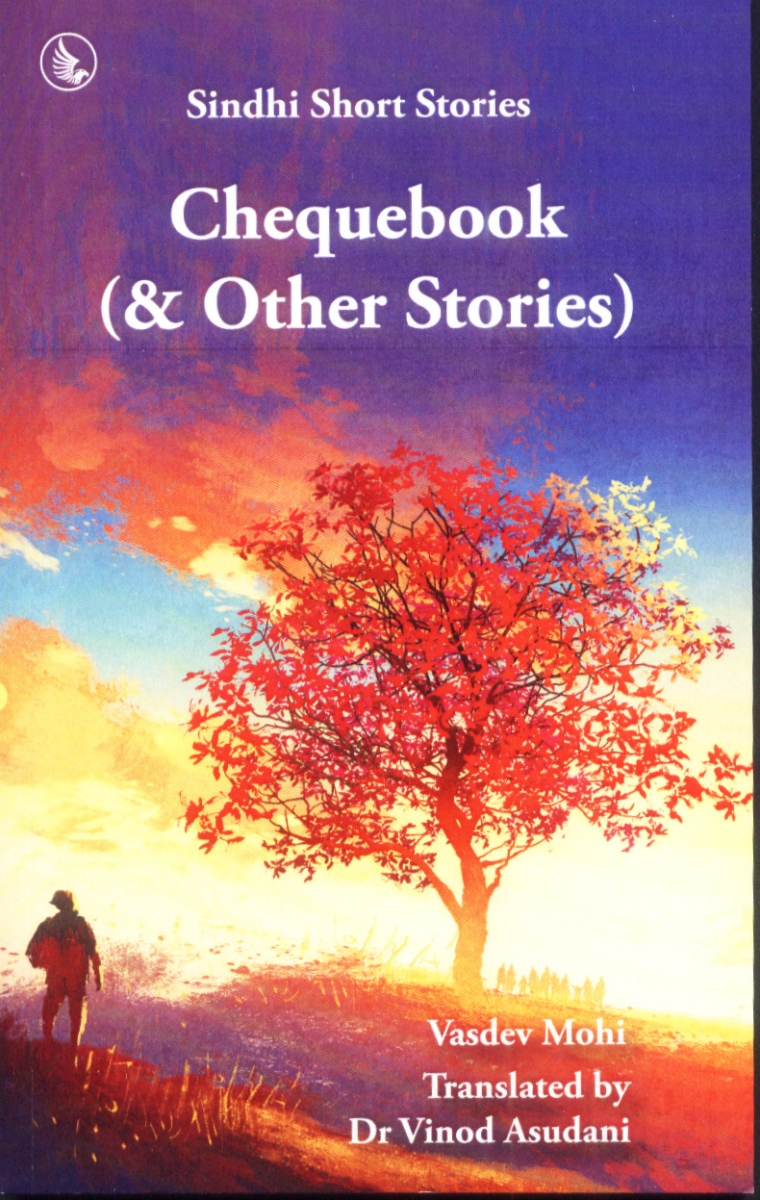
Sindhi writers have realised that literary trends and conflicting ideologies may be convenient tools in the hands of critics but creativity cannot be subjected to any ideological or literary trend. Creativity always transcends acts such limitations. Recently Vasdev Mohi, a prominent poet, has contributed some significant short stories. His stories are set in variety of places such as Gujarat, Kerala and Manipur, and the societies that he attempts to place his characters in are equally diverse, hailing from different religious communities and socio-economic backgrounds. His story about transgender society, 'Make-up', is the only one of its kind in Sindhi literature. In a way, he has given a pan-Indian face to the Sindhi short story. His collection of short stories has been translated into Hindi and English. At the same time, another senior Sindhi poet, Arjan Hasid, has also started contributing to the genre of the Sindhi short story and his stories stand out due to the lyricism of his prose.
Conclusion
It is a fact that due to globalisation every language is losing its urban readership. The problem is more pronounced for the Sindhi community, which is settled mainly in urban areas, while other languages have a hinterland where they persist. This makes the Sindhi language more vulnerable. It is scarcely used even as a spoken language. Yet, it is attracting new voices. In fact, those who gravitate towards Sindhi are the same writers who have acquired some stature while writing in Hindi or other languages after which they have come back to their mother tongue. The reason could be that at a deeper, subconscious level the creation of literature is rooted in the exploration of self-identity and the mother tongue is a part of the core identity of any individual. Thus, the Sindhi literary scene lives in a paradox of optimism and fear, about existence and of extinction, threaded by hope!
